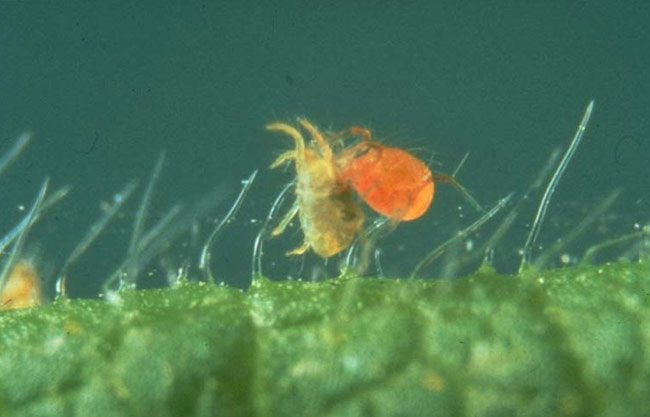Plant Gets Help to Fight Pests

Mustard plants often fall prey to hungry spider mites. Now, thanks to a little genetic tweaking by scientists, they can call for backup to fight off leaf-munching pests.
When under attack by hungry pests, some plants release chemicals that call out to other insects, such as predatory mites, to come eat the pests. The mustard plant Arabidopsis thaliana doesn't naturally produce these distress chemicals – called terpenoids – but strawberry plants do.
So, scientists at Wageningen University in the Netherlands took the gene responsible for producing terpenoids in strawberry plants and inserted it into Arabidopsis.
To see if their Franken-plant worked, they planted equal numbers of modified and regular Arabidopsis plants and let a bunch of spider mites dine freely. As the spider mites munched, the researchers introduced predatory mites to the garden and stepped back to observe the feeding frenzy.
And sure enough, more predatory mites went to the rescue of the modified plants – 388 to 197. Not only that, but researchers discovered that the plants were also producing a second, unintended predatory mite attractant, in some cases in greater quantities than the intended one.
Previous attempts at introducing terpenoid encoding genes to plants have yielded disappointing results. Modified plants in this study, however, produced 25 times more predatory mite attractant than those from previous attempts, most likely because the researchers inserted the gene directly into the mitochondria, the cell's power plant.
Since terpenoids aren't available commercially and are difficult to make in a lab, these scientists suggest that inserting this gene, or one like it, into crop plants could be a good way to protect them from pests.
Get the world’s most fascinating discoveries delivered straight to your inbox.
Some scientists aren't convinced that this type of genetic modification is a good idea. Since the plant would constantly produce these terpenoids, predatory mites would constantly be attracted to the plant and wouldn't know when prey is actually available.
This study was detailed in a recent issue of the journal Science.
- Killer Caterpillar Eats Snails Alive
- New Alien Bug Could Threaten U.S. Pine Trees
- Tiny Pest Decimating Honeybee Colonies


